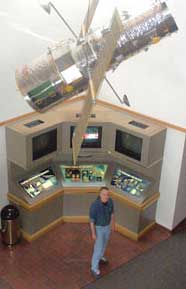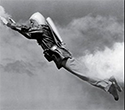The Photographer And The Beatles
I’m reading a Vanity Fair article about a young photographer for the Daily Express who was assigned in January 1964 to tag along with The Beatles as they went on tour, first in France and then on to their first tour in the US.
These couple paragraphs of the article really took me back. The band is in Paris and the photographer, Harry Benson, has to get his photos back to the paper in London for the paper’s next daily edition. This was Way before digital cameras and the Internet…
That evening they knocked about in the suite again. But my day didn’t end when the Beatle’s day ended. Every night I’d stay up in my hotel bathroom, developing and printing pictures, so the Express could pick one to run in the paper. I’d use gaffer’s tape to seal any openings around the door, wedge towels under the door, and put a bedsheet on the floor to kneel on. In the pitch dark, I’d put the exposed rolls of black-and-white film in little tanks with D-76 developer, usually spilling developer all over the place. I’d hang the rolls of negatives on the shower rack to dry. I ruined more toilets developing my photographs than I can count.
I’d then put my enlarger on the commode. I’d choose the best frames, print them wet, then fix them with fixer in a small tank. When you flipped the light on, you’d see a hellish mess: your hands and bedsheet stained yellow. You used the bathtub to wash the prints and negatives, drying them with a hair dryer. By then it’s 5am. You’d set up a transmitter and attach it to the bedroom phone and send three or four “selects”; it would take about eight minutes to transmit each picture.
I’m assuming the transmitter worked along the same principle as a radio fax machine. Those would have been international dialing costs, plus hotel dialing charges, and all that even more astronomical when they got to the US. But his newspaper would have gladly paid for all of it along with the other travel expenses given how popular The Beatles already were. That was how you did it back in the 1960s. It would have been how you did it all the way up to the 1980s and the first personal computers and modems I think.
I remember developing my photos in the one bathroom in the apartment mom and and I shared. I don’t remember making that much of a mess and I’m guessing it’s because this guy wasn’t familiar with working in a darkroom, but would just hand off his rolls to the newspaper darkroom guys. If you’re in the darkroom you’re not out in the field getting some shots. Also, I think the Brits make a distinction between “toilet” and “commode” but I’m not sure what it is. I remember setting up my enlarger on the toilet seat. When it came time to make prints I had my trays positioned in and around the bathroom sink. I had a plastic tub with a hole I’d drilled into it that I put my prints in to be washed under the bathtub faucet. I’d hang blankets around the bathroom door to light proof it. For printing I had a safelight I’d attached to the wall above the clothes hamper.
I still have some of that equipment down in the darkroom I’ve made out of the basement bathroom in my house today, including that safelight. Much better enlarger though.
His process seems weird. I can see printing wet given his deadlines. But printing negatives “wet” should only be do-able After fixing because the fixing part of the process takes the unexposed silver nitrates off the film. If you look at film after developing but before fixing (use stop bath!!!!!) you can see the negative in there but the rest of it is milky white because that’s the silver nitrates that weren’t developed because they were not exposed to light. Fixer takes that off the film and now you have a negative you can print.
His film tank should have allowed him to turn on the lights after it was loaded and then he can see what he’s doing pouring the chemistry in and out. I’m wondering what sort of camera he used, but it was a roll film camera of some sort, so I don’t understand why he didn’t have a light proof tank with him that he needed to develop his rolls in total darkness and splash developer everywhere (the Nikor tank was patented in 1937). “By the 1960s the Nikor tanks and reels were pretty much the industry standard.” There were tanks and reels back then for 35mm and 120 roll film. He would have still needed either total darkness or a safelight to print. If he’s printing in total darkness I can see him splashing chemistry everywhere. In the article he doesn’t talk any about the equipment he used and I can understand why since the focus was on being there when The Beatles were just becoming huge. But I’ve done film developing since I was a teenage boy and I have questions.
But…obviously he knew what he was doing because he got his shots and got them back to the paper. And he had the tenacity I didn’t have to make it in that incredibly competitive world…especially since it was a Fleet Street paper he worked for. And he got some of the earliest shots of The Beatles as they were on the cusp of becoming huge, embedded with them on their first tour in the US. Weird as his process was he has my respect, and a maybe more than a little envy.







































